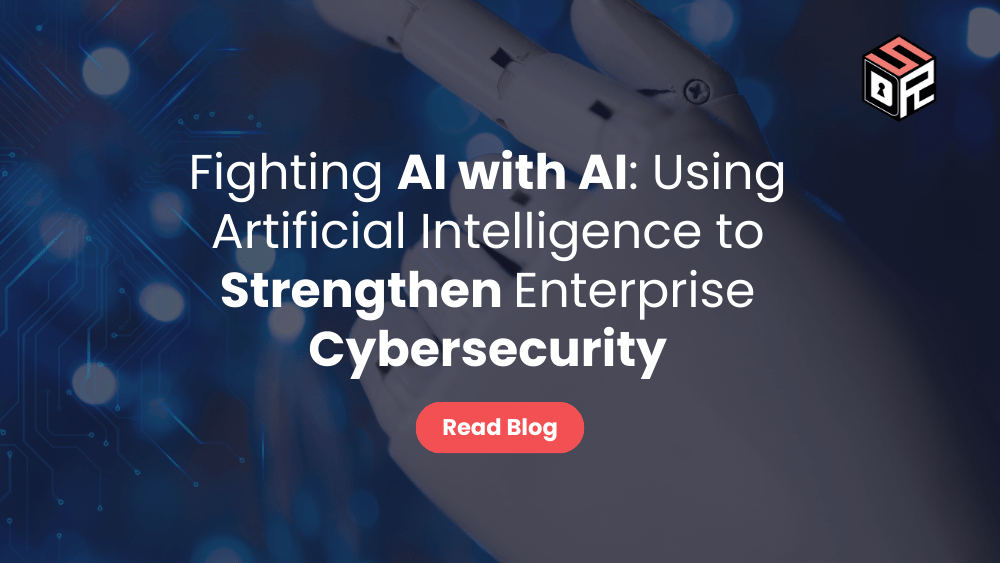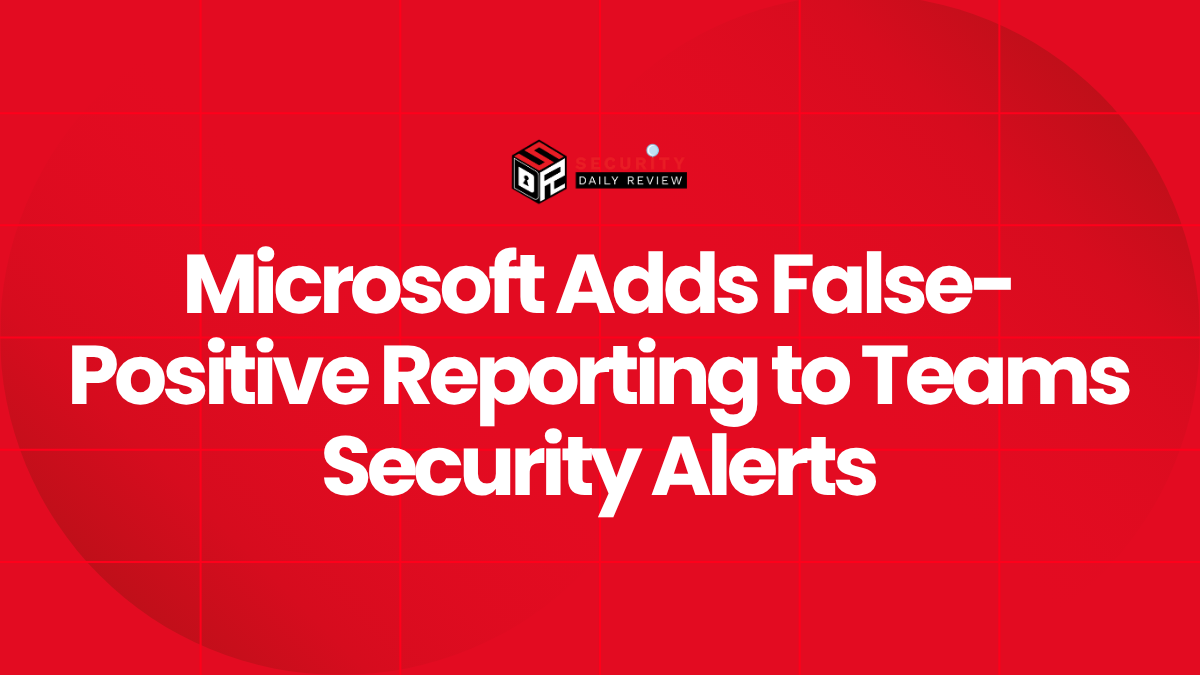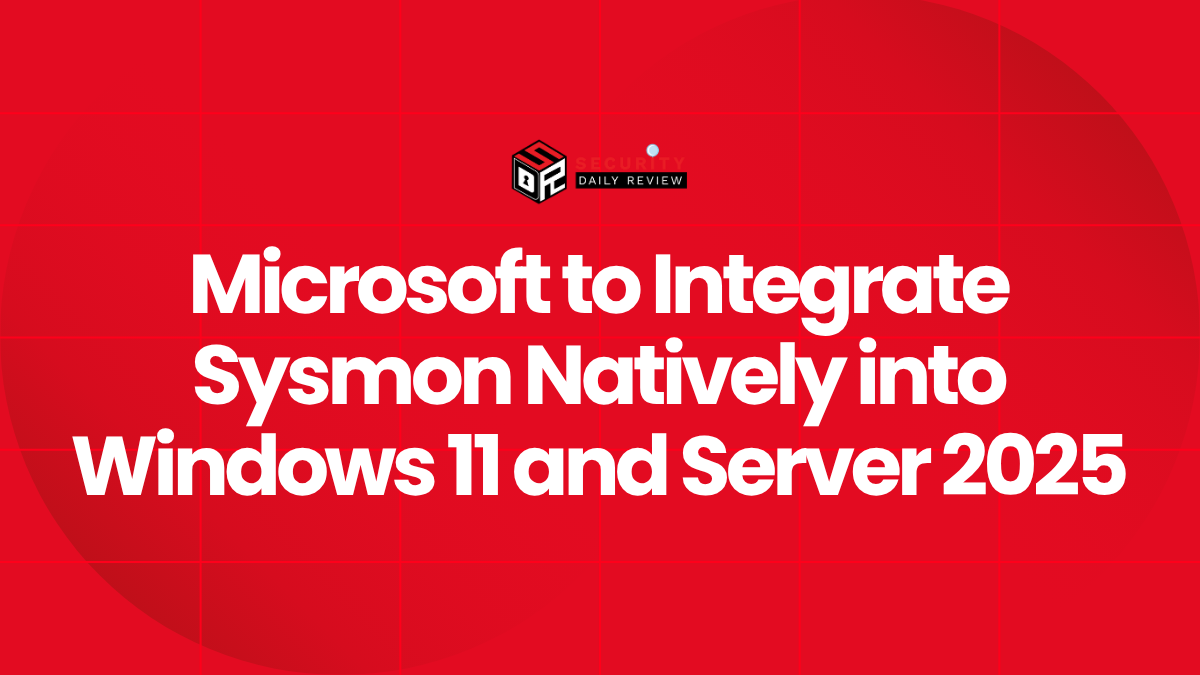The digital landscape is evolving at an unprecedented pace, with artificial intelligence (AI) driving both innovation and unprecedented security risks. The rise of sophisticated AI-generated cyberattacks, including the insidious use of deepfake technology and the relentless onslaught of automated hacking attempts, has ignited a cybersecurity arms race. This escalating battle demands a new approach, and increasingly, the answer lies in leveraging the very technology that poses the threat: artificial intelligence.
For enterprise businesses, the stakes are particularly high. The sheer volume and complexity of modern cyber threats often overwhelm traditional, human-centric cybersecurity models. A persistent shortage of skilled cybersecurity professionals exacerbates this problem, leaving many organizations vulnerable to attacks that exploit the latest technological advancements. This skills gap creates a critical need for AI to act as a force multiplier, enhancing both threat detection and response capabilities.
But is relying solely on AI enough? Or are we overlooking crucial aspects of cybersecurity that only human expertise can address? Let’s delve into the multifaceted role of AI in combating AI cybersecurity threats.
The Rise of AI in Cybersecurity: A Double-Edged Sword
The rise of AI in cybersecurity is a double-edged sword. While AI offers powerful tools to combat sophisticated attacks, it also presents new vulnerabilities.
The increasing sophistication of AI-driven cyberattacks, such as deepfake technology and automated hacking attempts, has created a cybersecurity arms race. These attacks are often faster, more complex, and more difficult to detect than traditional attacks.
The sheer scale and complexity of modern cyber threats demand automation, speed, and precision – qualities that AI excels at. Traditional, human-centric cybersecurity models struggle to keep pace with the volume of attacks.
The Advantages of AI in Cybersecurity
AI offers several significant advantages in the fight against sophisticated cyberattacks:
- Automation, Speed, and Precision: AI excels at automating tasks, processing vast amounts of data with incredible speed and precision. This is crucial in the face of the sheer volume of attacks faced by enterprise businesses today. Traditional methods simply cannot keep pace. AI can analyze network traffic, user behavior, and system logs in real-time, identifying anomalies and potential threats far faster than human analysts.
- Invisible Threat Detection: AI can detect threats that are imperceptible to the human eye. For instance, AI models specifically trained to identify deepfake technology can pinpoint subtle digital manipulations that would easily evade human detection. This capability is crucial in preventing misinformation campaigns and sophisticated fraud schemes.
- Proactive Threat Mitigation: Instead of merely reacting to attacks, AI enables proactive security strategies. By analyzing historical data and identifying patterns indicative of AI-driven attacks (such as botnet activities or automated hacking attempts), AI can preemptively thwart attacks before they inflict damage. This shift from reactive to proactive defense is a game-changer for enterprise security.
- Scalability and Adaptability: AI-driven security systems can autonomously configure firewalls, diagnose vulnerabilities, and apply software patches without human intervention. This reduces the window of opportunity for attackers and enhances overall system resilience. Moreover, AI-enabled security policies can adapt based on historical incident data, continuously evolving to protect against emerging threats.
The Challenges and Risks of Over-Reliance on AI
While AI offers significant advantages, it’s crucial to acknowledge the challenges and risks associated with over-reliance on AI-driven security solutions. Enterprise businesses must understand these limitations to build a robust and effective security framework.
- AI’s Fallibility: AI, despite its power, is a tool, and like any tool, it’s not infallible. AI systems are vulnerable to manipulation, particularly through adversarial attacks. These attacks involve carefully crafted inputs designed to deceive the AI model, causing it to make incorrect decisions or fail to detect threats. Over-reliance on AI without human oversight can leave organizations exposed to these vulnerabilities.
- The Need for Human Intuition and Judgment: AI excels at pattern recognition and data analysis, but it lacks the human capacity for intuition, creativity, and judgment. Complex threats often require creative problem-solving and a deep understanding of the attacker’s motivations and tactics. Humans are essential in interpreting AI’s findings, making critical decisions, and adapting strategies in response to evolving threats.
- The Importance of Explainability: Many AI models, particularly deep learning systems, operate as “black boxes,” making it difficult to understand how they arrive at their conclusions. This lack of explainability can hinder troubleshooting and make it challenging to identify and address weaknesses in the AI system itself. For enterprise businesses, understanding the reasoning behind security decisions is critical for trust and accountability.
- Data Dependency: AI models require vast amounts of high-quality data to function effectively. Insufficient or biased data can lead to inaccurate results and compromised security. Enterprise businesses must ensure that their AI systems are trained on comprehensive and representative datasets.
- The Risk of Adversarial Attacks: As mentioned, adversarial attacks can manipulate AI models, causing them to misinterpret data or fail to detect threats. These attacks highlight the importance of robust AI model design and continuous monitoring to detect and mitigate adversarial manipulations.
- Ethical Considerations: The use of AI in cybersecurity raises ethical considerations, particularly regarding privacy and data security. Enterprise businesses must ensure that their AI systems comply with relevant regulations and ethical guidelines.
Specific AI Cybersecurity Solutions for Enterprise Businesses
Given the escalating nature of AI-driven cyberattacks, enterprise businesses need to adopt specific AI-powered cybersecurity solutions to bolster their defenses. These solutions should be integrated into a comprehensive security strategy that includes both technological and human elements.
- AI-Powered Threat Intelligence Platforms: These platforms collect and analyze threat data from various sources, including internal systems, external feeds, and open-source intelligence. They use machine learning algorithms to identify patterns and predict potential attacks, enabling proactive security measures. For enterprise businesses, the ability to correlate threat intelligence with internal vulnerabilities is crucial for prioritizing remediation efforts.
- AI-Driven Security Information and Event Management (SIEM) Systems: Modern SIEM systems leverage AI to analyze security logs and events, detecting anomalies and potential threats that might be missed by human analysts. These systems can automate incident response, reducing the time it takes to contain and remediate security breaches. Enterprise-grade SIEMs should offer robust reporting and analytics capabilities to provide insights into security posture and trends.
- AI-Based Endpoint Detection and Response (EDR) Solutions: EDR solutions utilize AI to monitor endpoint devices (computers, laptops, mobile devices) for malicious activity. They can detect and respond to threats in real-time, preventing data breaches and malware infections. For enterprise businesses with a large number of endpoints, AI-powered automation is essential for efficient management and response.
- AI-Enhanced Vulnerability Management Systems: These systems use AI to automatically scan systems for vulnerabilities, prioritize patches, and even deploy them without human intervention. This reduces the window of opportunity for attackers to exploit weaknesses. Enterprise deployments require integration with existing asset management systems for accurate vulnerability assessment and prioritization.
- AI-Powered Network Security Solutions: AI can enhance network security by detecting and preventing intrusions, analyzing network traffic for anomalies, and identifying malicious actors. These solutions can adapt to evolving attack techniques, providing continuous protection. Enterprise networks often require advanced features like micro-segmentation and automated incident response capabilities.
- AI for Deepfake Detection: Given the increasing use of deepfakes in social engineering attacks and disinformation campaigns, AI-powered deepfake detection tools are becoming increasingly important. These tools can analyze images and videos to identify subtle manipulations that would be difficult for humans to detect. Enterprise businesses should consider integrating these tools into their security awareness training programs.
Real-World Examples and Case Studies: AI in Action
How AI Can Combat Cybersecurity Threats
While the theoretical benefits of AI in cybersecurity are compelling, real-world examples solidify its importance and highlight its practical applications within enterprise environments. Let’s examine some specific scenarios where AI is making a tangible difference:
1. Deepfake Detection in Financial Institutions:
Imagine a scenario where a deepfake video of a CEO authorizing a large financial transaction is used to defraud a bank. Traditional methods might struggle to detect such a sophisticated forgery. However, AI-powered systems, trained on vast datasets of authentic and manipulated videos, can identify subtle inconsistencies in facial expressions, micro-movements, and lighting, effectively exposing the deepfake and preventing the fraudulent transaction. This is a critical application for financial institutions, protecting them from substantial financial losses and reputational damage.
2. Automated Hacking Detection in Critical Infrastructure:
Critical infrastructure, such as power grids and water treatment plants, is a prime target for cyberattacks. The sheer volume of data generated by these systems makes manual monitoring nearly impossible. AI-powered intrusion detection systems can analyze network traffic in real-time, identifying unusual patterns and potential intrusions far more efficiently than human analysts. By detecting and responding to automated hacking attempts swiftly, AI helps prevent widespread disruptions and potential catastrophic failures.
3. Threat Intelligence Sharing in Global Corporations:
Multinational corporations with operations across the globe face geographically dispersed threats. AI-powered threat intelligence platforms enable the sharing of real-time threat information across different branches and departments. This collaborative approach allows for rapid response to emerging threats, preventing attacks from spreading across the organization. The collective intelligence gathered from various sources enhances the overall security posture, creating a more resilient defense against global cyberattacks.
4. Vulnerability Management in Software Development:
AI is increasingly used in the software development lifecycle to identify and mitigate vulnerabilities before they reach production. AI-powered static and dynamic analysis tools can scan code for potential weaknesses, significantly reducing the risk of exploitable vulnerabilities. This proactive approach helps prevent costly security breaches and improves the overall security of software applications.
Implementing AI Cybersecurity Solutions: Best Practices for Enterprise Businesses
The successful implementation of AI cybersecurity solutions requires careful planning and execution. Here are some best practices:
- Data Integration and Correlation: AI systems rely on accurate and comprehensive data. Enterprise businesses should ensure that their security data is properly integrated and correlated to enable effective threat detection and response.
- AI Model Training and Validation: AI models need to be trained on large datasets to achieve high accuracy. It’s crucial to validate the models regularly to ensure they are performing as expected and adapting to evolving threats.
- Human Oversight and Collaboration: AI should be viewed as a tool to augment human capabilities, not replace them. Enterprise businesses should maintain a strong human element in their security operations, ensuring that AI systems are monitored and managed effectively.
- Security Awareness Training: Employees should be trained on the risks of AI-driven attacks and how to identify and report suspicious activity. This is particularly important in the context of social engineering attacks using deepfakes and other AI-powered techniques.
- Continuous Monitoring and Improvement: AI cybersecurity solutions should be continuously monitored and improved to ensure they remain effective against evolving threats. Regular security assessments and penetration testing are essential to identify vulnerabilities and weaknesses.
The Human-AI Partnership: A Necessary Collaboration
While AI offers significant advantages, it’s crucial to acknowledge its limitations. The human element remains indispensable in cybersecurity. Human intuition, creativity, and critical thinking are essential for addressing complex threats and adapting to evolving attack techniques. The cybersecurity workforce must adapt, focusing on training professionals who can both build and supervise AI systems. We need experts who understand AI’s limitations and can step in when automated systems fail.
- Training for AI Cybersecurity Professionals: The skills gap in the cybersecurity industry is a significant concern. Addressing this requires investment in training programs that equip professionals with the knowledge and skills to effectively utilize and manage AI security solutions. This includes understanding AI’s capabilities, limitations, and ethical implications.
- Human Oversight in AI Security: Human oversight is crucial to ensure that AI systems are used responsibly and ethically. This involves establishing clear guidelines for AI deployment, monitoring its performance, and addressing any biases or inaccuracies. Humans must be involved in decision-making processes, particularly in critical situations where AI might provide unreliable or incomplete information.
- AI Security Solutions and Machine Learning: The integration of AI security solutions and machine learning algorithms is transforming the cybersecurity landscape. However, it’s important to ensure that these technologies are implemented responsibly and ethically, with appropriate human oversight and accountability.
- University Partnerships: Collaborating with universities and research institutions to develop specialized curricula and research initiatives in AI cybersecurity can create a pipeline of skilled professionals. This collaboration ensures that the next generation of cybersecurity experts is well-equipped to handle the challenges of an increasingly AI-driven world.
- Continuing Education and Upskilling: Existing cybersecurity professionals need access to continuing education and upskilling opportunities to stay abreast of the latest advancements in AI and its application to cybersecurity. This ensures that the workforce remains relevant and capable of effectively managing AI-powered security systems.
- Attracting and Retaining Talent: The cybersecurity industry faces a significant talent shortage. Enterprise businesses need to offer competitive salaries, benefits, and career development opportunities to attract and retain skilled professionals. Creating a positive and supportive work environment is essential to retaining this valuable talent.
The Future of AI in Enterprise Cybersecurity: A Proactive and Adaptive Approach
The future of AI in enterprise cybersecurity points towards a more proactive and adaptive approach to security. Instead of simply reacting to attacks, organizations will increasingly leverage AI to predict and prevent them. This shift requires a deeper integration of AI into all aspects of the security lifecycle, from threat intelligence gathering to incident response.
Predictive Security Analytics
AI will play a crucial role in predictive security analytics, enabling organizations to anticipate potential threats based on historical data, emerging trends, and external intelligence. This proactive approach will allow for the preemptive mitigation of risks, reducing the likelihood and impact of successful attacks. Enterprise businesses will need to invest in advanced analytics platforms capable of processing and interpreting vast amounts of data to identify subtle indicators of compromise.
Automated Threat Hunting
AI-powered threat hunting tools will automate the process of searching for malicious activity within enterprise networks. These tools will use machine learning algorithms to identify sophisticated threats that might be missed by traditional security systems. This will free up human analysts to focus on more complex investigations and strategic security initiatives.
Self-Healing Security Systems
The concept of self-healing security systems, where AI automatically detects and remediates security vulnerabilities without human intervention, is gaining traction. These systems will use AI to continuously monitor systems, identify weaknesses, and apply patches or other corrective measures. This will significantly reduce the window of opportunity for attackers to exploit vulnerabilities. However, careful oversight and testing are necessary to ensure the reliability and safety of such autonomous systems.
AI-Driven Security Orchestration, Automation, and Response (SOAR)
SOAR platforms will leverage AI to automate security workflows, improving efficiency and reducing the time it takes to respond to security incidents. This will be particularly important in dealing with AI-driven attacks, which can often unfold rapidly. Enterprise businesses will need to carefully integrate SOAR platforms with their existing security tools and processes to ensure seamless operation.
Enhanced Collaboration and Information Sharing
The increasing reliance on AI in cybersecurity necessitates enhanced collaboration and information sharing among organizations. This will involve sharing threat intelligence, best practices, and AI models to collectively improve the security posture of the entire ecosystem. Industry consortia and collaborative platforms will play a key role in facilitating this information exchange.
Ethical Considerations and Responsible AI in Cybersecurity
As AI becomes more deeply integrated into cybersecurity, ethical considerations become increasingly important. Enterprise businesses must ensure that AI systems are used responsibly and ethically, avoiding potential biases and discriminatory outcomes. This includes:
- Data Privacy and Security: AI systems often rely on large amounts of data, raising concerns about data privacy and security. Enterprise businesses must ensure that data is collected, processed, and stored in compliance with relevant regulations and ethical guidelines.
- Algorithmic Transparency and Explainability: The decision-making processes of AI systems should be transparent and explainable to ensure accountability and build trust. This is particularly important in high-stakes security contexts where decisions can have significant consequences.
- Bias Mitigation: AI systems can inherit and amplify biases present in the data they are trained on. Enterprise businesses must take steps to mitigate these biases to avoid discriminatory outcomes.
- Human Oversight and Accountability: Human oversight is essential to ensure that AI systems are used responsibly and ethically. Clear guidelines and procedures should be established to govern the use of AI in security operations, with mechanisms for accountability and oversight.
- Continuous Monitoring and Evaluation: AI systems should be continuously monitored and evaluated to ensure their effectiveness and identify any potential biases or unintended consequences. Regular audits and reviews are essential to maintain ethical standards.
By embracing a proactive and collaborative approach that leverages the power of AI while retaining the crucial role of human expertise, enterprise businesses can build a robust and resilient cybersecurity posture capable of withstanding the ever-evolving threats of the digital age. The future of cybersecurity is not a battle between humans and machines, but a powerful partnership built on mutual strengths.
Conclusion
Fighting AI cybersecurity threats with more AI is a necessity, but it’s a necessity that must be tempered with caution. A balanced approach that combines the power of AI with human expertise is essential for building a resilient, adaptive, and future-ready cybersecurity framework. AI is a powerful tool, but it’s not a silver bullet. The human element remains crucial in ensuring the responsible and effective use of AI in cybersecurity. Investing in cybersecurity workforce development, promoting human oversight, and addressing the ethical implications of AI are crucial steps in building a stronger and more secure digital future for enterprise businesses.
FAQs
Q: How can AI help combat AI cybersecurity threats?
A: AI can enhance threat detection, automate responses, improve vulnerability management, and enable proactive security strategies, significantly improving overall cybersecurity posture against AI-driven attacks.
Q: What are the risks of solely relying on AI for AI cybersecurity threats?
A: Over-reliance on AI can lead to vulnerabilities due to adversarial attacks, lack of transparency, potential biases, and dependence on data quality. Human expertise is essential for effective oversight and decision-making.
Q: What role does human expertise play in addressing AI cybersecurity threats?
A: Human intuition, creativity, and critical thinking are crucial for addressing complex threats, adapting to evolving attack techniques, and providing oversight to AI systems, ensuring responsible and ethical use.
Q: What are the key challenges in implementing AI-driven cybersecurity solutions in a large enterprise?
A: Implementing AI in large enterprises presents challenges like data integration from diverse systems, ensuring data quality and consistency for accurate AI model training, managing the complexity of AI systems, and integrating AI solutions with existing security infrastructure. Moreover, skilled personnel are needed to manage and interpret AI-generated insights.
Q: How can AI improve the efficiency of incident response in my enterprise?
A: AI automates many incident response tasks, such as threat identification, system isolation, and malware containment. It accelerates the investigation process by analyzing vast datasets to pinpoint the root cause of a breach much faster than human analysts alone. This reduces downtime and minimizes the impact of security incidents.
Q: What are the potential legal and compliance implications of using AI for cybersecurity in my enterprise?
A: Using AI in cybersecurity raises concerns about data privacy, algorithmic bias, and accountability. Enterprises must ensure compliance with regulations like GDPR and CCPA, addressing data protection and transparency requirements. Legal counsel should be consulted to ensure adherence to all relevant laws and regulations.
Q: How can I ensure the ethical use of AI in my enterprise’s cybersecurity strategy?
A: Ethical AI implementation requires careful consideration of bias in algorithms, transparency in decision-making processes, and human oversight to prevent unintended consequences. Establish clear guidelines for AI deployment, regularly audit systems for bias, and ensure human review of critical decisions made by AI systems. Transparency and explainability of AI algorithms are crucial for building trust and accountability.
Q: What is the role of human expertise in an AI-driven cybersecurity environment?
A: While AI automates many tasks, human expertise remains crucial for strategic decision-making, complex threat analysis, ethical considerations, and oversight of AI systems. Humans provide critical thinking, judgment, and creativity that AI currently lacks, ensuring responsible and effective use of AI in cybersecurity. The ideal scenario is a collaborative human-AI partnership.
Q: How can I measure the effectiveness of AI in my enterprise’s cybersecurity efforts?
A: Measure effectiveness by tracking key metrics such as reduced detection time for threats, decreased number of successful attacks, improved incident response times, and a lower mean time to resolution (MTTR) for security incidents. Regular security assessments and penetration testing help validate the effectiveness of AI-driven security measures.









